Authentication Service Account (Using *.json OR *.p12 key file)
Description
Service accounts are accounts that do not represent a human user. They provide a way to manage authentication and authorization when a human is not directly involved, such as when an application needs to access Google Cloud resources. Service accounts are managed by IAM. [API reference]
Instructions
Follow these steps on how to create Service Account to authenticate and access Google Sheets API in SSIS package or ODBC data source:
Step-1: Create project
This step is optional, if you already have a project in Google Cloud and can use it. However, if you don't, proceed with these simple steps to create one:
-
First of all, go to Google API Console.
-
Then click Select a project button and then click NEW PROJECT button:
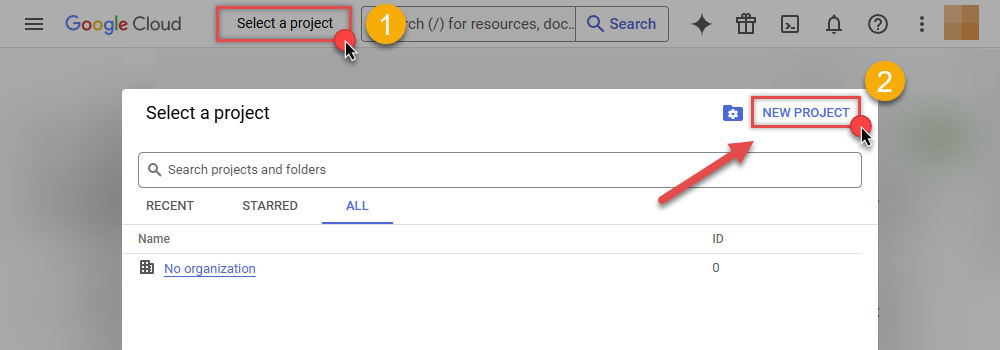
-
Name your project and click CREATE button:
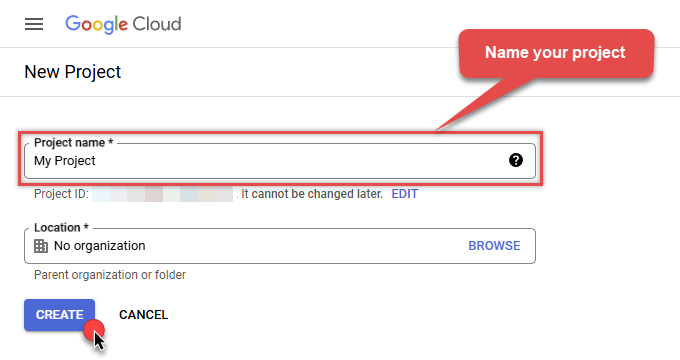
-
Wait until the project is created:
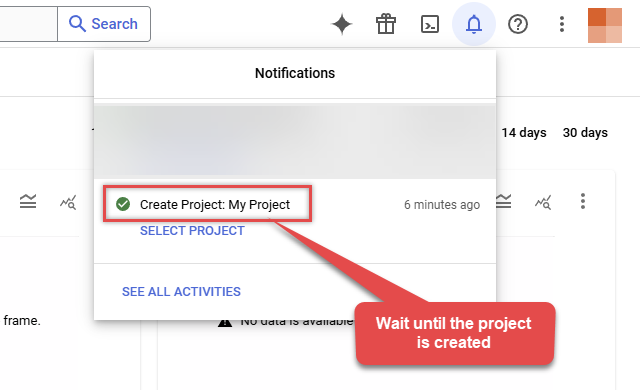
- Done! Let's proceed to the next step.
Step-2: Enable Google Cloud APIs
In this step we will enable Google Sheets API and Google Drive API:
-
Select your project on the top bar:
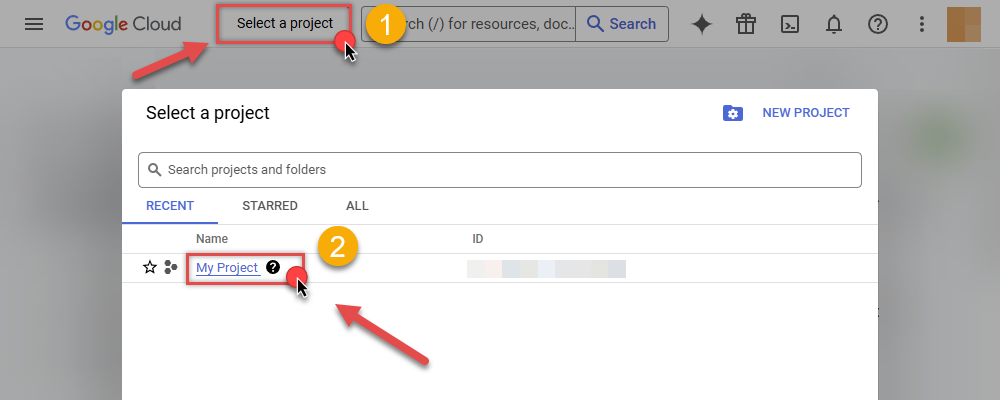
-
Then click the "hamburger" icon on the top left and access APIs & Services:
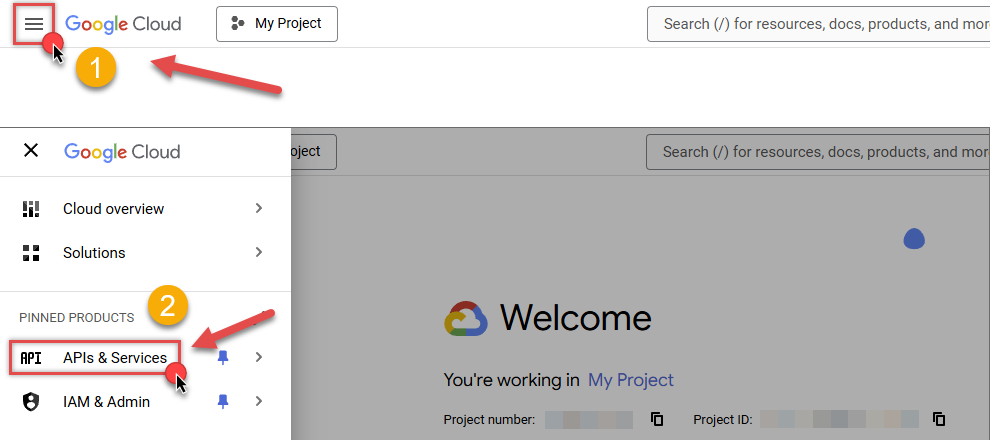
-
Now let's enable several APIs by clicking ENABLE APIS AND SERVICES button:
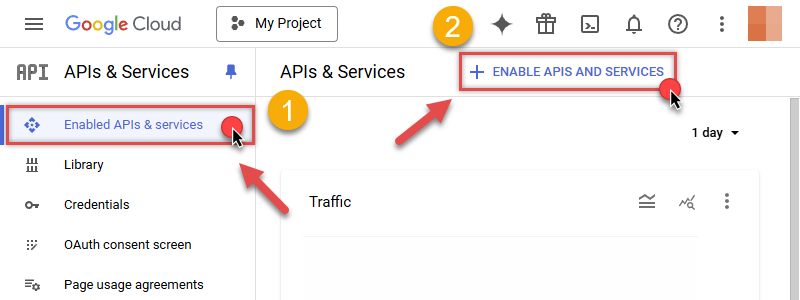
-
In the search bar search for
sheetsand then locate and select Google Sheets API: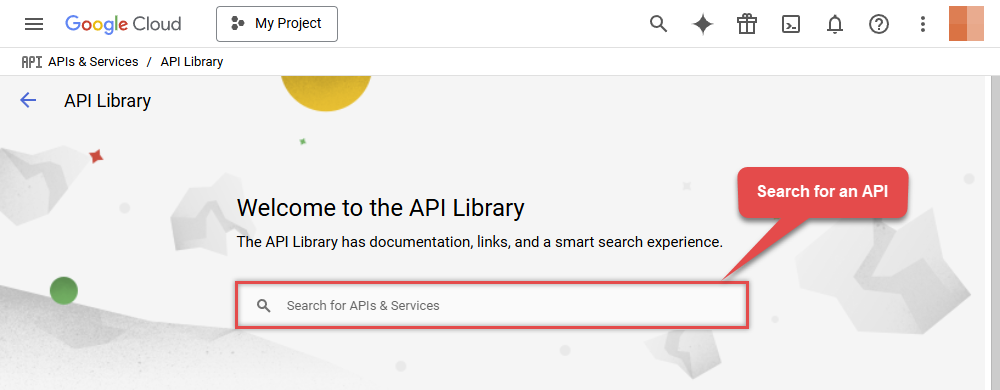
-
Then enable Google Sheets API:
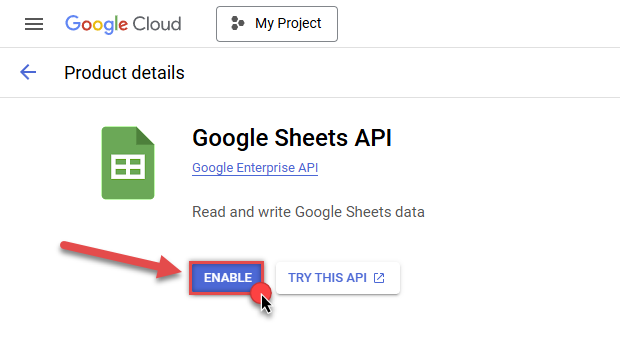
-
Again, repeat the step and enable Google Drive API as well:
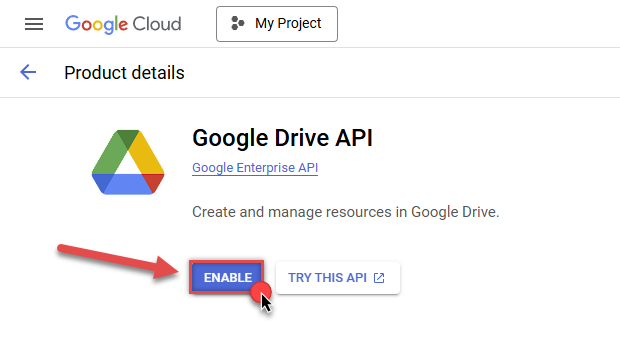
- Done! Let's proceed to the next step.
Step-3: Create Service Account
Use the steps below to create a Service Account in Google Cloud:
-
First of all, go to IAM & Admin in Google Cloud console:
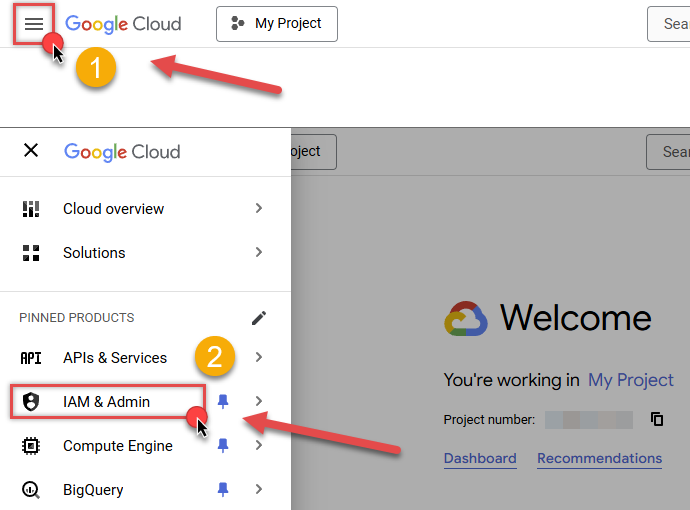
-
Once you do that, click Service Accounts on the left side and click CREATE SERVICE ACCOUNT button:
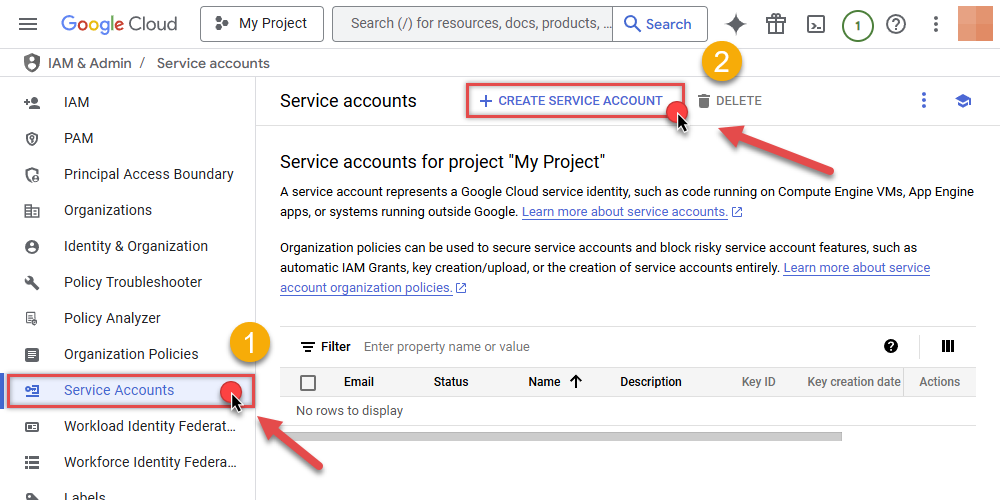
-
Then name your service account and click CREATE AND CONTINUE button:
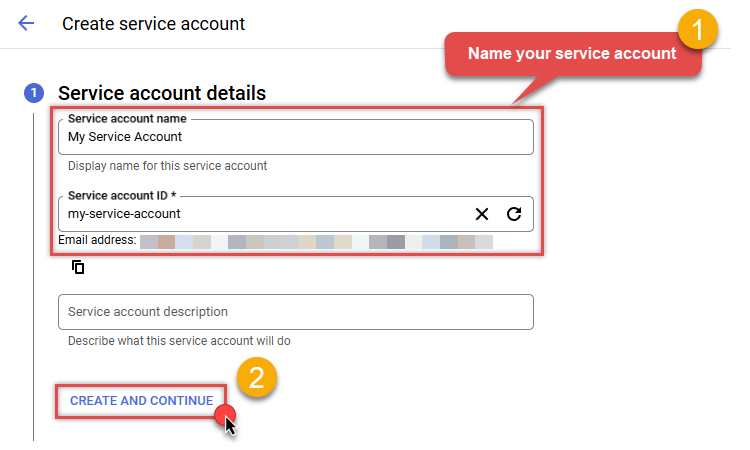
-
Continue by clicking Select a role dropdown and start granting service account Project Viewer roles:
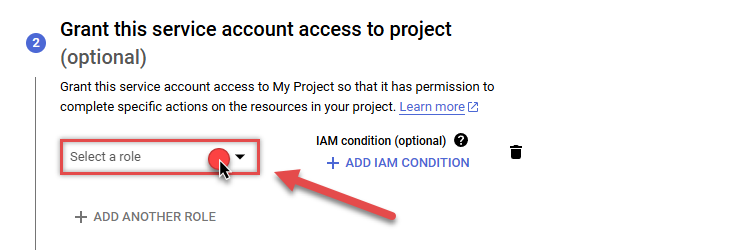
-
Find Project group and select Viewer role:
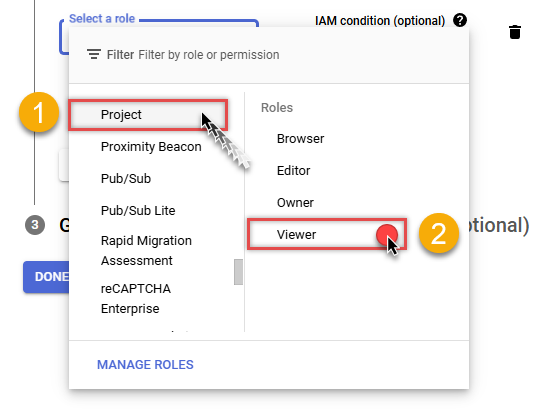
-
Finish adding roles by clicking CONTINUE button:
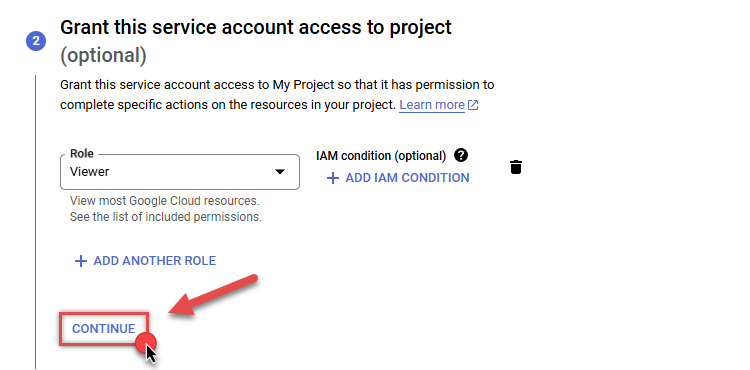 You can always add or modify permissions later in IAM & Admin.
You can always add or modify permissions later in IAM & Admin. -
Finally, in the last step, just click button DONE:
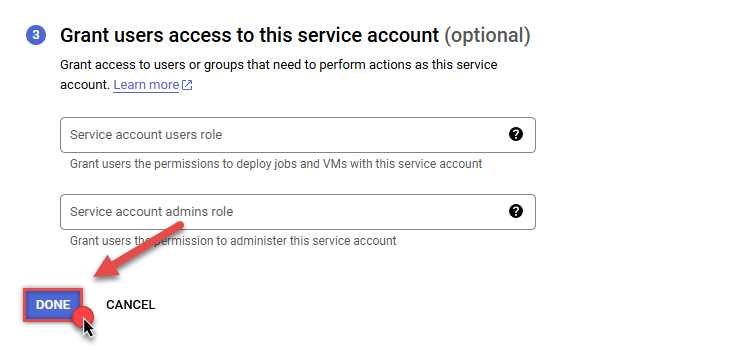
-
Done! We are ready to add a Key to this service account in the next step.
Step-4: Add Key to Service Account
We are ready to add a Key (JSON or P12 key file) to the created Service Account:
-
In Service Accounts open newly created service account:
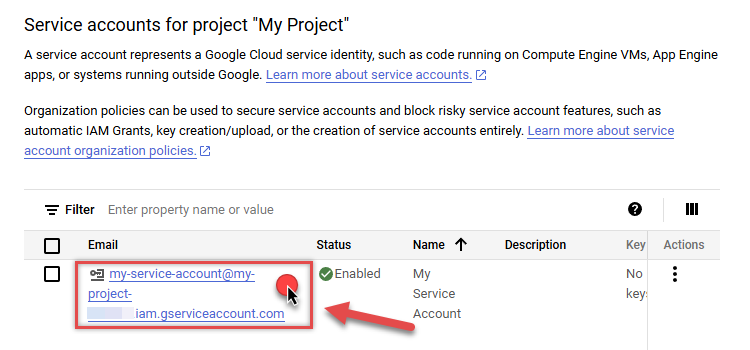
-
Next, copy email address of your service account for the later step:
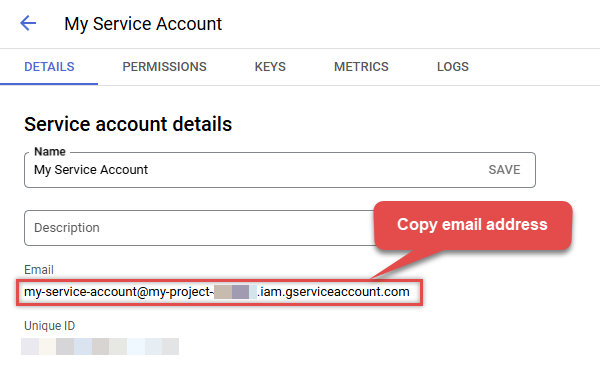
-
Continue by selecting KEYS tab, then press ADD KEY dropdown, and click Create new key menu item:
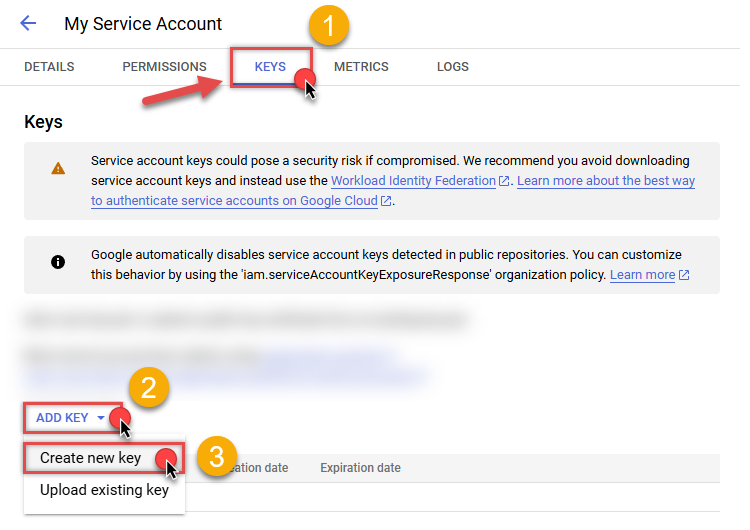
-
Finally, select JSON (Engine v19+) or P12 option and hit CREATE button:
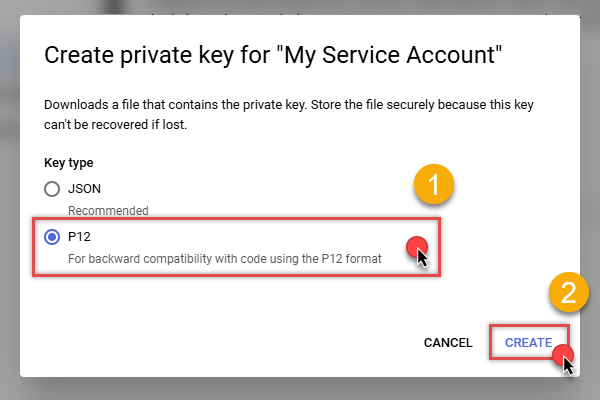
- Key file downloads into your machine. We have all the data needed for authentication, let's proceed to the last step!
Step-5: Configure connection
-
Now go to SSIS package or ODBC data source and use previously copied values in User Account authentication configuration:
- In the Service Account Email field paste the service account Email address value you copied in the previous step.
- In the Service Account Private Key Path (i.e. *.json OR *.p12) field use downloaded certificate's file path.
-
Press Generate Token button to generate Access and Refresh Tokens.
-
Open your Google Sheets spreadsheet in the browser, e.g.:
https://docs.google.com/spreadsheets/d/1QM6WmGloHeGCliCqV3nEj8P-R1RbS59t5xJutN99rU/edit. -
Extract the spreadsheet Id from the URL and copy it to the clipboard, e.g.
1QM6WmGloHeGCliCqV3nEj8P-R1RbS59t5xJutN99rU. -
Go back to authentication configuration window and paste it into Default SpreadsheetId field.
-
Finally, click Test Connection to confirm the connection is working.
-
Done! Now you are ready to use Google Sheets Connector!
Parameters
| Parameter | Required | Default value | Options | ||||||
|---|---|---|---|---|---|---|---|---|---|
|
Name:
Label: Service Account Email This is service account email ID (e.g. some_name@my_project.iam.gserviceaccount.com) |
YES | ||||||||
|
Name:
Label: Service Account Private Key Path (i.e. *.json OR *.p12) File path for JSON Key or p12 file (i.e. Private Key file for service account). Keep this key file secure |
YES | ||||||||
|
Name:
Label: Default SpreadSheetId Enter default spreadsheet Id which should be used if user do not supply when calling various operations supported by this connector. To obtain sheet Id. Open spreadsheet in browser and check URL. You will example value like 1BxiMVs0XRA5nFMdKvBdBZjgmUUqptlbs74OgvE2upms that is your sheet id. |
YES |
|
|||||||
|
Name:
Label: Scope |
https://www.googleapis.com/auth/drive https://www.googleapis.com/auth/spreadsheets
|
||||||||
|
Name:
Label: Default Tab Name (i.e. Sheet1) Enter default tab name for spreadsheet Id you supplied. If you keep it blank then it will use first tab by default. |
|||||||||
|
Name:
Label: RetryMode |
RetryWhenStatusCodeMatch
|
||||||||
|
Name:
Label: RetryStatusCodeList |
403|429
|
||||||||
|
Name:
Label: RetryCountMax |
5
|
||||||||
|
Name:
Label: Impersonate As (Enter Email Id) |
